TheRed1
Console Conservationist
While researching background information for part 4 (1970-1971) of my XP speakers series, I came across this revealing document from 1973 published by the U.S. International Trade Commission:
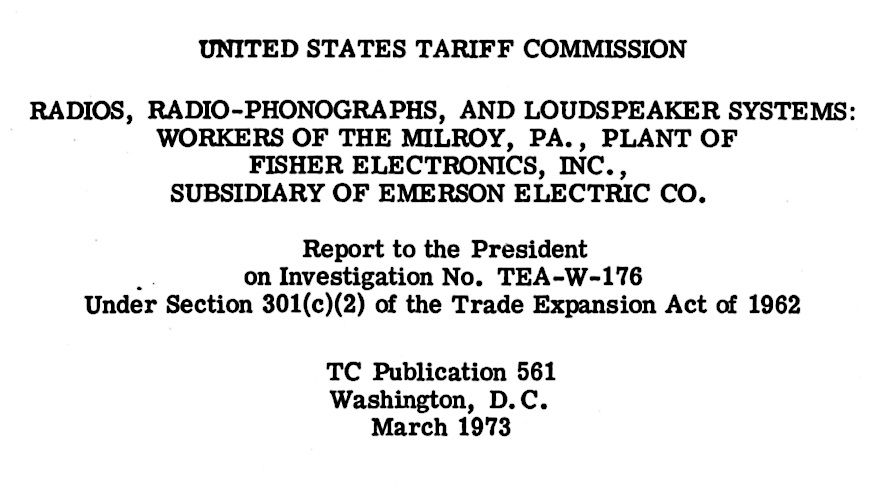
Apparently some of the workers at the Fisher's Milroy, Pa. plant felt the importation of foreign-made electronics had either cost them their jobs or reduced their hours.
It appears that the ITC agreed:
EXCEPT for the loudspeaker category:
The reason being:
As I read further I kept coming across groups of asterisks where most of the real meaty data should have been. I was perplexed and annoyed.
Still, by reading the concluding statement at the end of the commissioners' report, the significance of the missing information is obvious:
Referring back to the table of contents, the magnitude of redactions is appalling. All of the details provided by Fisher about their production facilities at the Milroy, Pa. plant are missing.
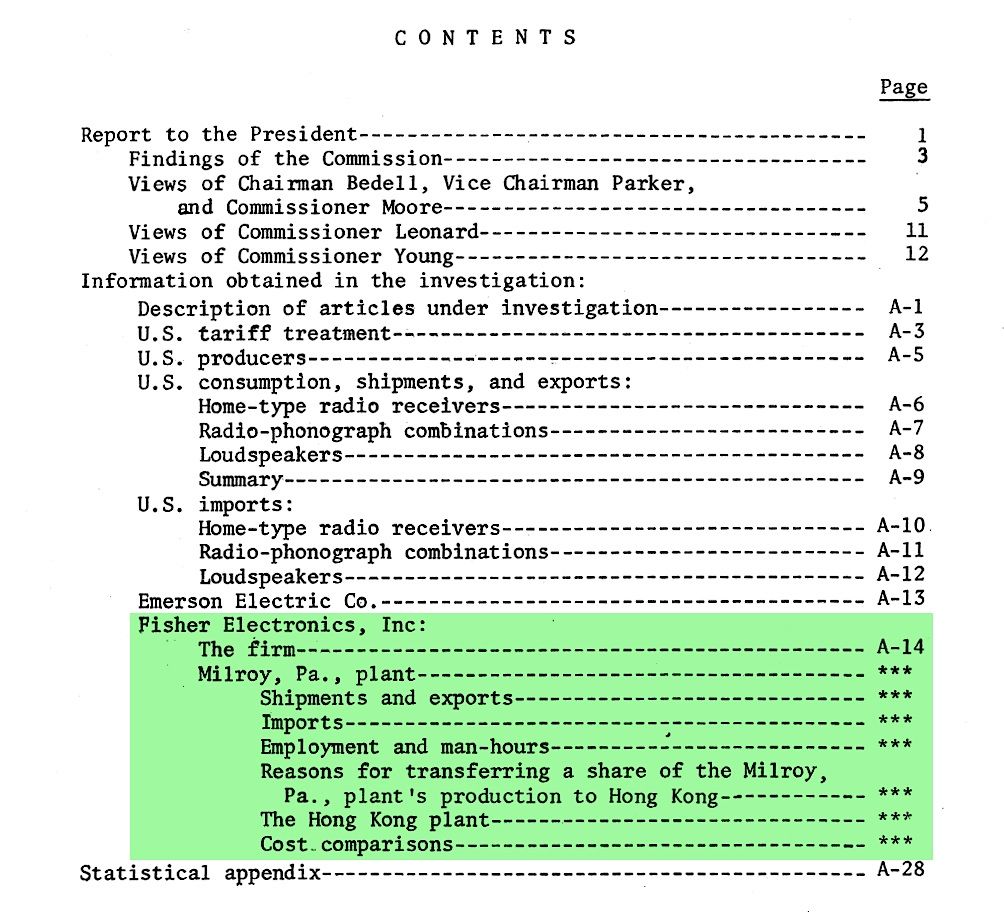
Finally, at the end of another page referring to missing information - the explanation:
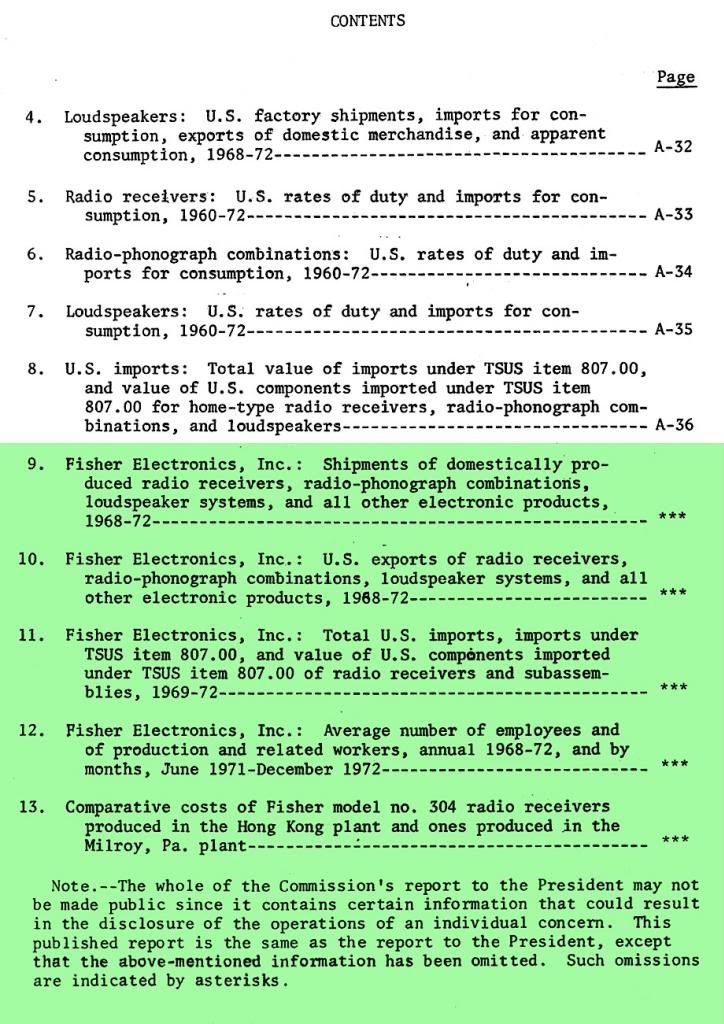
So I am in the process of requesting a Freedom of Information Act release of the unredacted original document. I can't imagine the information would still be proprietary after all these years.
One of the few sections not completely redacted is the following brief description of the firm. It does contain some interesting data such as the date and price of the sale of Fisher to Emerson. Also of interest (and this really surprised me) is the date Fisher transferred production to Milroy - 1962. I'm not sure if they really meant Fisher's entire production but I suppose it's possible. This document does support my previous conclusion that, after Mr. Fisher sold the company to Emerson, Fisher products were no longer produced at their Long Island facilities. The 'Fisher Radio - Long Island, NY' printed on many Fisher products of the Emerson era was evidently only a reference to the location of their corporate offices.
For those interested in the chronology of the demise of the U.S. electronics industry the following Dept. of Commerce information is very telling:
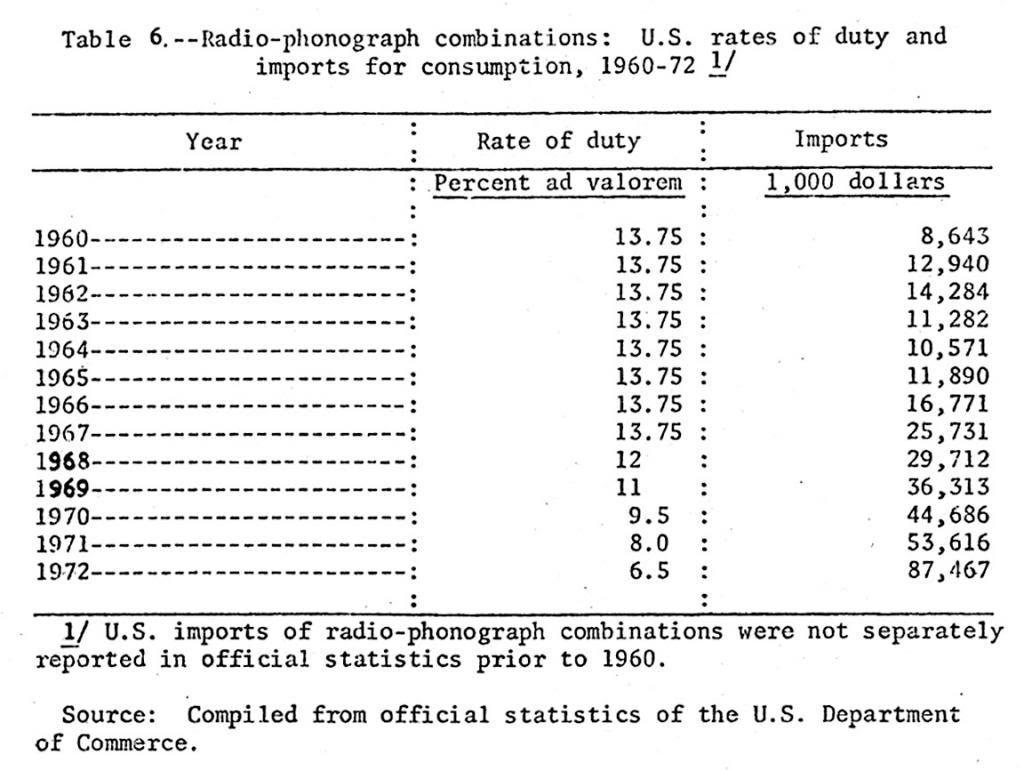
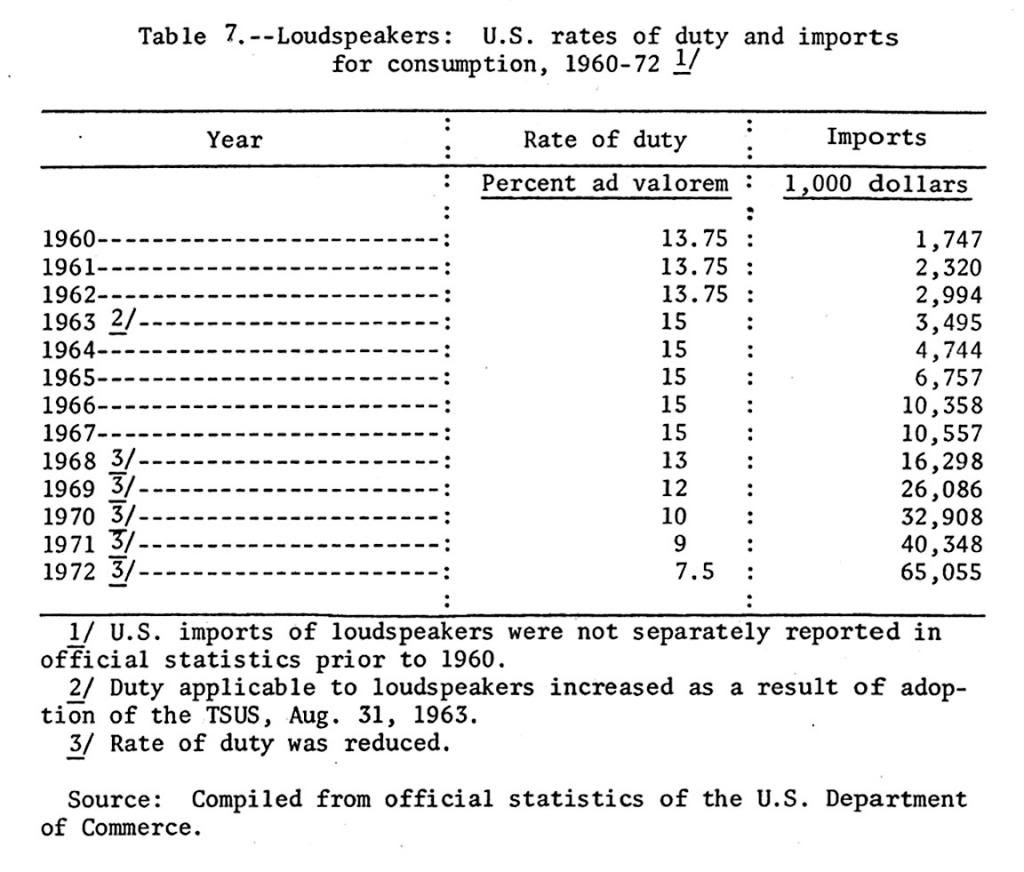

Apparently some of the workers at the Fisher's Milroy, Pa. plant felt the importation of foreign-made electronics had either cost them their jobs or reduced their hours.
On January 29, 1973, the Tariff Commission received a petition from three former workers of the Milroy, Pa., plant of Fisher Electronics, Inc., a subsidiary of Emerson Electric Co., St. Louis, Mo., for a determination of eligibility to apply for adjustment assistance on behalf of the workers and former workers of said firm or an appropriate subdivision thereof. The Commission instituted the investigation (TEA-W-176) on February 5, 1973, to determine whether, as a result in major part of concessions granted under trade agreements, articles like or directly competitive with radio - tape combination sets, headphones and loudspeaker systems, stereo and quadraphonic AM/FM radios, and radio-phonograph and radio-phonograph-tape player combinations produced by said firm are being imported into the United States in such increased quantities as to Cause, or threaten to cause, the unemployment or underemployment of a significant number or proportion of the workers of such firm or an appropriate subdivision thereof.
It appears that the ITC agreed:
. . . the Commission finds (Commissioners Leonard and Young dissenting) that articles like or directly competitive with radio receivers and radio-phonograph combinations produced by Fisher Electronics, Inc., subsidiary of Emerson Electric Co., are, as a result in major part of concessions granted under trade agreements, being imported into the United States in such increased quantities as to cause, or threaten to cause, unemployment or underemployment of a significant number or proportion of the workers of Fisher Electronics, Inc., an appropriate subdivision of the firm.
EXCEPT for the loudspeaker category:
The Commission further finds, by majority vote, that articles like or directly competitive with loudspeaker systems produced by Fisher Electronics, Inc. are not, as a result in major part of concessions granted under trade agreements, being imported into the United States in such increased quantities as to cause, or threaten to cause, unemployment or underemployment of a significant number or proportion of the workers of the firm or an appropriate subdivision thereof. Vice Chairman Parker made no finding with respect to loudspeaker systems.
The reason being:
Japan is, by far, the major source of imports of loudspeakers by the United States, having supplied on the average about 90 percent of all U.S. imports of loudspeakers since 1967. However, Japan's exports to the United States are concentrated in the smaller-sized speakers (2 to 6 inches in diameter) which can be shipped at the lower "per hundredweight" freight rate (rather than by volume) and U.S. imports of loudspeaker systems are relatively small.
As I read further I kept coming across groups of asterisks where most of the real meaty data should have been. I was perplexed and annoyed.
The workers were engaged in the production of radiotape combination sets, headphones and loudspeaker systems, stereo and quadraphonic AM/FM radios and radio-phonograph and radio-phonographtape player combinations. However, the manufacture of radio receivers, radio-phonographs, and loudspeaker systems have accounted for over *** percent of the total production man-hours expended on all electronic products in the Milroy plant. In ***, Fisher began to obtain complete radio receivers as well as radio chassis (utilized in the assembly of radio receivers and radio-phonograph combinations) from unaffiliated Far Eastern firms. In ***, Emerson purchased a facility in Hong Kong which became an additional source for these items.
Still, by reading the concluding statement at the end of the commissioners' report, the significance of the missing information is obvious:
As imports by Fisher of radio receivers and radio chassis increased, production of and employment on these items at the Milroy plant decreased substantially. Accordingly, we have concluded that the increased imports have been the major factor in causing the unemployment of the workers concerned.
Referring back to the table of contents, the magnitude of redactions is appalling. All of the details provided by Fisher about their production facilities at the Milroy, Pa. plant are missing.

Finally, at the end of another page referring to missing information - the explanation:

So I am in the process of requesting a Freedom of Information Act release of the unredacted original document. I can't imagine the information would still be proprietary after all these years.
One of the few sections not completely redacted is the following brief description of the firm. It does contain some interesting data such as the date and price of the sale of Fisher to Emerson. Also of interest (and this really surprised me) is the date Fisher transferred production to Milroy - 1962. I'm not sure if they really meant Fisher's entire production but I suppose it's possible. This document does support my previous conclusion that, after Mr. Fisher sold the company to Emerson, Fisher products were no longer produced at their Long Island facilities. The 'Fisher Radio - Long Island, NY' printed on many Fisher products of the Emerson era was evidently only a reference to the location of their corporate offices.
Fisher Electronics, Inc.
The firm
The company was established in the 1930's by Mr. Avery Fisher for the purpose of manufacturing electronic products developed by Mr. Fisher. It was then called the Philharmonic Co. and was located in New York City. During the second World War, Philharmonic was engaged in defense production but resumed the manufacture of consumer electronics products in 1946 under the name of Fisher Radio Corp. which was then located on Long Island. In 1962 production was transferred to a new facility in Milroy, Pa.
Fisher Radio Corp. was purchased by Emerson Electric Co. on July 25, 1969 for 569,520 shares of Emerson common stock, which was valued at approximately $29 million. The corporation was reorganized into two operations--the Fisher Radio Div., Emerson Electric Co., in Long Island City, N.Y., and Fisher Electronics, Inc., in Milroy, Pa. * * *
The Fisher Radio Division in Long Island City, N.Y., houses the marketing, engineering, financial, service, and some of the corporate offices of Fisher Electronics, Inc. * * *
Emerson Electric of Hong Kong, another wholly owned subsidiary of Emerson Electric, was purchased in * * *.
For those interested in the chronology of the demise of the U.S. electronics industry the following Dept. of Commerce information is very telling:


Last edited:

